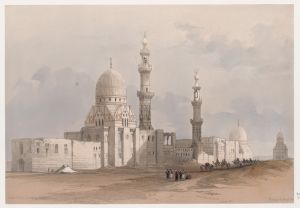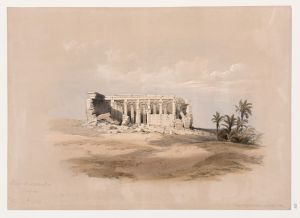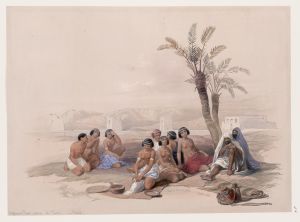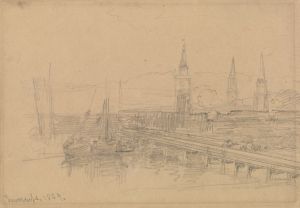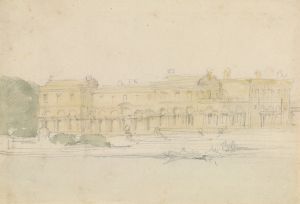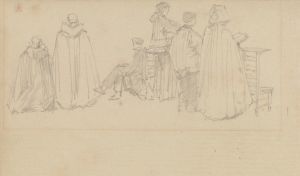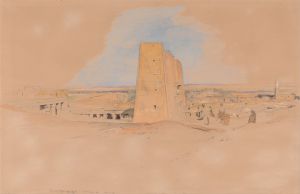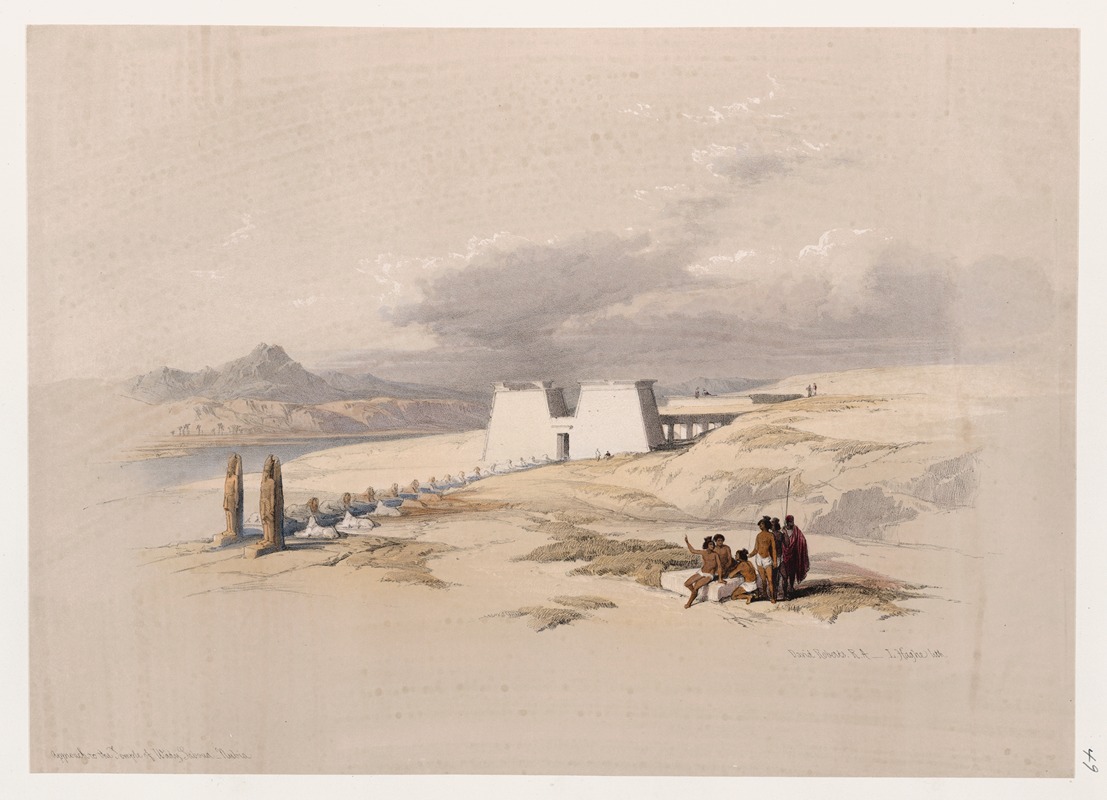
Approach to the Temple of Wady Sabua [Wadi al-Sabua], Nubia.
A hand-painted replica of David Roberts’s masterpiece Approach to the Temple of Wady Sabua [Wadi al-Sabua], Nubia., meticulously crafted by professional artists to capture the true essence of the original. Each piece is created with museum-quality canvas and rare mineral pigments, carefully painted by experienced artists with delicate brushstrokes and rich, layered colors to perfectly recreate the texture of the original artwork. Unlike machine-printed reproductions, this hand-painted version brings the painting to life, infused with the artist’s emotions and skill in every stroke. Whether for personal collection or home decoration, it instantly elevates the artistic atmosphere of any space.
David Roberts' painting Approach to the Temple of Wady Sabua [Wadi al-Sabua], Nubia is a 19th-century artwork that forms part of his extensive series of depictions of Egypt and Nubia. Roberts, a Scottish painter, is renowned for his detailed and romanticized portrayals of Middle Eastern and North African landscapes, monuments, and architecture. His works were instrumental in introducing European audiences to the grandeur of ancient sites in these regions during the 19th century.
The painting captures the approach to the Temple of Wadi al-Sabua, an ancient Egyptian temple complex located in Lower Nubia, near the modern-day border between Egypt and Sudan. The temple, whose name translates to "Valley of the Lions," was originally constructed during the reign of Pharaoh Amenhotep III in the 14th century BCE and later modified by Pharaoh Ramesses II in the 13th century BCE. It was dedicated to the gods Amun and Ra-Horakhty. The site is notable for its avenue of sphinxes, which once lined the approach to the temple, giving the location its name.
Roberts visited the region in 1838–1839 as part of a larger expedition to document the ancient monuments of Egypt and Nubia. His journey was part of a broader European fascination with Egyptology during this period, spurred by Napoleon's earlier campaigns and the subsequent publication of the Description de l'Égypte. Roberts' sketches and paintings from this expedition were later lithographed and published in a series titled The Holy Land, Syria, Idumea, Arabia, Egypt, and Nubia between 1842 and 1849. These works were highly acclaimed for their artistic quality and historical value.
In Approach to the Temple of Wady Sabua, Roberts employs his characteristic attention to detail and dramatic use of light and shadow to emphasize the scale and majesty of the ancient ruins. The composition likely includes figures in traditional Nubian attire, a common feature in Roberts' works, which served to provide a sense of scale and cultural context. The painting reflects both the architectural splendor of the temple and the surrounding desert landscape, capturing the interplay between human achievement and the natural environment.
Today, the Temple of Wadi al-Sabua is one of the sites that were relocated during the 1960s as part of the UNESCO-led Nubian Monuments Campaign to save ancient structures from flooding caused by the construction of the Aswan High Dam. Roberts' artwork remains a valuable historical record of the site as it appeared in the 19th century, prior to its relocation.





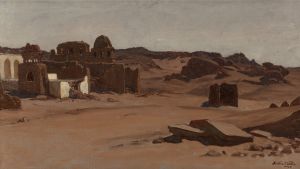
![Edfou [Edfu, Idfû]. Nov. 24th, 1838.](/imgs/217476/s/david-roberts-edfou-edfu-idfu-nov-24th-1838-1a041c82.jpg)
![General view of Esouan [sic] and the Island of Elephantine.](/imgs/217488/s/david-roberts-general-view-of-esouan-sic-and-the-island-of-elephantine-f2e67a35.jpg)
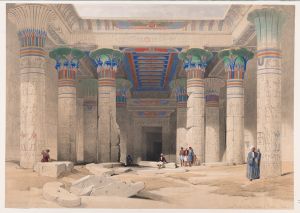
![Karnac [Karnak]. Nov. 29th, 1838.](/imgs/217502/s/david-roberts-karnac-karnak-nov-29th-1838-8df2346d.jpg)
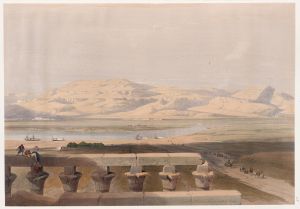
![Temple of Edfou [Idfû], ancient Appolinopolis, Upper Egypt.](/imgs/217546/s/david-roberts-temple-of-edfou-idfu-ancient-appolinopolis-upper-egypt-2a77d2d6.jpg)
